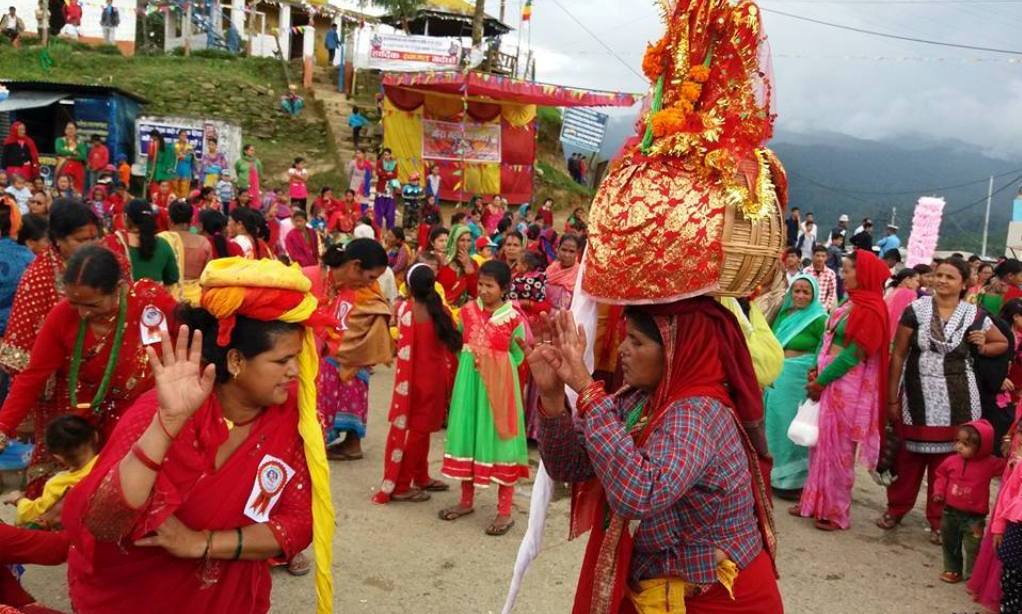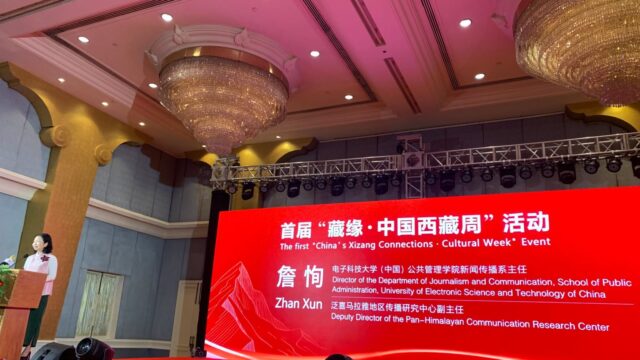Nepali expatriates from the Far-Western region are set to celebrate this year’s Gaura festival with grand festivities in the United States. Scheduled to take place on August 25, 2024, the Gaura Mahotsav will be held across major cities including New York, Maryland, and Texas. This celebration marks a significant cultural event for the Nepali diaspora, reflecting their dedication to preserving and sharing their rich traditions.
The Gaura festival, a prominent cultural celebration in Nepal’s Far-Western region, will be hosted by the regional Nepali societies in these U.S. states. According to Daman Vikram Shah, a prominent community leader from Maryland, meticulous preparations have been made to ensure a vibrant and culturally rich event. Traditionally observed for a week in the Far-Western region, this year’s celebrations in the U.S. will condense the festivities into a single day of immersive cultural experience.
The festival will feature traditional Western musical instruments such as dain, damaha, and jhyali, alongside cultural processions, devotional performances, and dance forms like Deuda, Chaliya, and Hudkeli. Noteworthy performances by renowned artists from the region, including Nandakrishna Joshi and Shankarsingh Bisht, will also be part of the festivities.
In Texas, where the Nepali community is notably large, the festival will be held in Dallas and Austin. Gagan K.C., President of the Far-Western Nepali Society of Texas, has outlined an exciting program that includes worship of the Gaura deity, cultural exhibitions, Deuda games, Chaliya and Hudkeli dances, and performances by celebrated artists from the region.
The Gaura festival is considered one of the oldest and most significant cultural traditions in the Far-Western region of Nepal. It is a festival deeply rooted in mythology and tradition, commemorating the severe penance and vows of Goddess Parvati. Traditionally, the festival begins with men gathering at temples on the day of Bhadra Sankranti to perform Deuda games, which signal the commencement of the celebrations.
The festival also involves various traditional practices such as women immersing five types of grains in local water bodies on Panchami, worshipping at traditional wells and ponds on the subsequent day, and culminating with the entry of the Gaura idol on Amuktabhara Saptami. The week-long Gaura festival is not only a religious observance but also a major cultural and social event in the Far-Western region.
Community leaders emphasize that celebrating Gaura in the diaspora helps preserve the cultural heritage and facilitates the transmission of traditions to younger generations born in the U.S. Ram Bahadur Dewwa, former President of the Far-Western Nepali Society of New York, highlights that such celebrations play a crucial role in maintaining cultural continuity and fostering a sense of community among Nepali expatriates.
The Gaura festival is seen as a means to bridge traditions with contemporary times, enhancing cultural awareness and national unity among the diaspora. As described by Bhojraj Bhatt, a community worker from Austin, the festival serves not only as a religious observance but also as a cultural anchor that connects past, present, and future generations through its rich traditions.
This year’s Gaura Mahotsav in the U.S. promises to be a significant cultural event, celebrating the vibrant traditions of the Far-Western Nepali community and offering a platform for cultural exchange and preservation.






